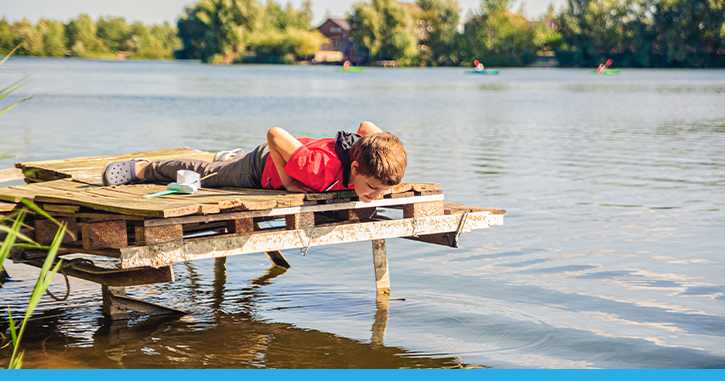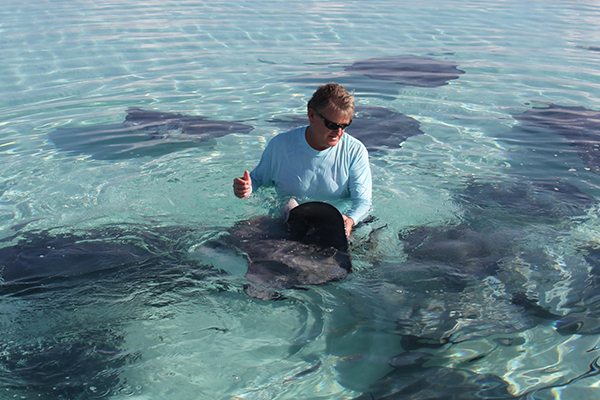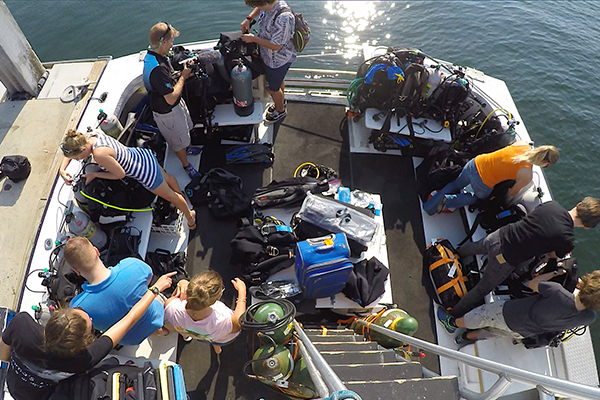Dive into Environmental Science with FLVS and the Guy Harvey Ocean Foundation

Teaching a generation that is so empowered, connected, empathetic, and driven to make a difference in the world, real-life examples to help them learn about conservation and sustainability are crucial. Luckily, the Florida Virtual School curriculum team and teachers are fully prepared to inspire students to make a long-lasting difference in our planet’s ecosystem.
Through our new Environmental Science course developed in partnership with the Guy Harvey Ocean Foundation (a non-profit organization paving the way for the next generation of marine conservationists through research and educational programs), you’ll have the opportunity to learn about sustainability and conservation through practical activities and applications.
In fact, almost every page of the course includes hands-on examples, calls-to-action, and enrichment activities that immerse students in case studies about environmental issues and success stories around the world.
Below, Dr. Harvey and Ms. Katherine Allen, have outlined how this course can help students positively impact the environment.
Bringing Learning to Life (Guy Harvey)
I have dedicated my life to developing programs that protect our oceans, fish populations, and reef systems—so it is incredibly exciting to bring the lessons to life with scientific data and videos.
With an online course, we can take students from anywhere in the world to the ocean through videos in the course supplied by our Guy Harvey Ocean Foundation scientists.

Through these videos, students can see what happens when we throw plastic in the trash rather than reusing or recycling. One video highlights the Great Pacific Garbage Patch and how single-use plastics that break down to microplastics negatively affect the aquatic ecosystem—from the fish that consume plastic to the birds that consume fish.
The visuals of this example help students put into perspective the impact of plastics on the ocean. It also demonstrates how when we protect the ocean, we can help its inhabitants live a healthy life.
Other videos showcase the importance of mangroves and seagrass, the impacts of climate change, the ocean’s biodiversity, and more.
Seeing Climate Change in Action (Ms. Katherine Allen)
We’ve all heard that we need to stop polar ice from melting, but why? Climate change is such a massive issue that can be difficult to comprehend without seeing it firsthand. To show students what is happening to the polar ice caps, we partnered with scientists in Greenland to create videos that include experiments.

One video shows the Greenland scientists examining ice samples melting around the lake. As students see bubbles forming on the lake, one scientist makes an air pocket in the snow and lights it on fire. How? Methane gas. Showing this real-life example highlights how this greenhouse gas adds to the thermal blanket that is trapping heat and creating extreme weather conditions.
Another aspect of the course, the climate change enrichment activity, allows students to use everyday household items such as plastic cups, water, vinegar, lemon juice, and more to test the effects of acidic chemical weathering on inorganic and organic substances. By the end of the activity, students can see that acid erodes both organic and inorganic materials and demonstrates how damaging acid rain is to the earth.
A Whole New World of Learning
The course also showcases dozens of STEM careers that students could pursue in the growing fields of environmental and marine science – to inspire a whole new world or learning.
For more information on Environmental Science, featuring the Guy Harvey Ocean Foundation and other courses that are new to FLVS this year, visit flvs.net/whatsnew.
A version of this blog originally appeared on eSchool News.

nice .